FOREIGN AWARDS TO KOREANS
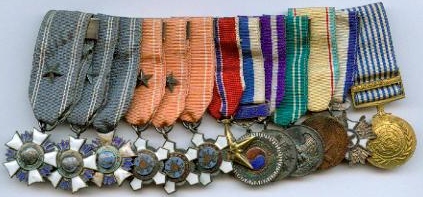
A South Korean must get permission to wear any foreign medal. They are required to submit an application to the Ministry of Government Administration, along with a picture of the medal and a copy of the award document. If the applicant is a government employee, the application must be submitted through the chief of the agency to which that person works. If permission is given, the recipient is issued a permit card, which must accompany the medal whenever it is worn in public. Wearing requirements state the Orders and Medals awarded by the Korean Government take precedence over the awards of foreign countries.1 However, it is common to see foreign decorations in the middle of a Korean medal group and mounted according to their degree of importance.
Here are several Korean Medal groups, with American Medals located after the Korean Orders and before the Ki Jang Medals. Korean legislation does not authorize Korean medals to be worn in this manner, but it is very common.
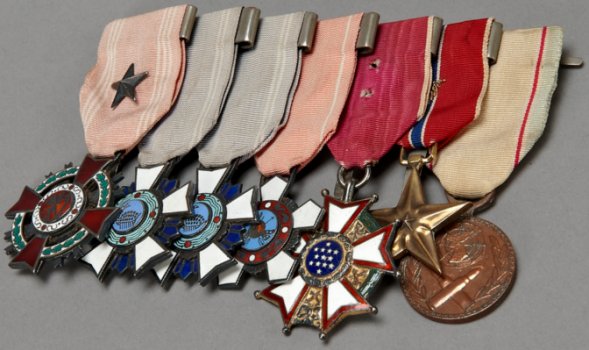
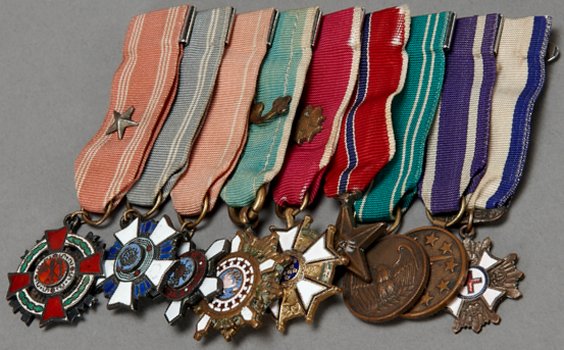
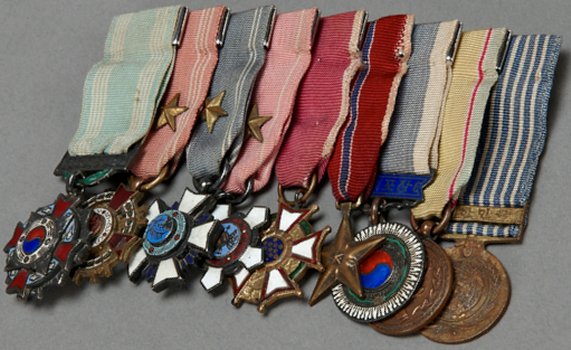
Republic of China – Anti-Japanese War Commemorative Medal 抗戰紀念章
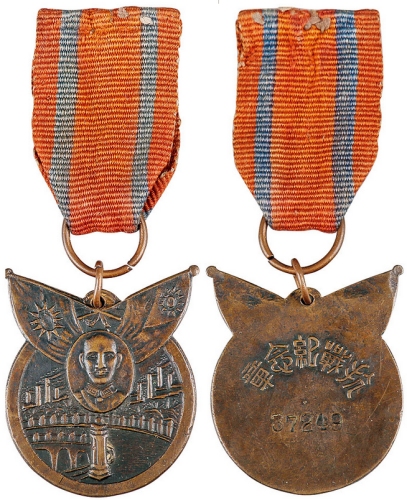
The reverse has 抗戰紀念章 (written from R. to L. ) in stylized characters and a serial number below that.

During World War II, thousands of Koreans joined the Liberation Army of the Korean Provisional Government, which in turn was attached to the Chinese Nationalist Forces. The Korean Liberation Army also formed an alliance with the Office of Strategic Services (OSS) of the United States and carried out special training for military operations on the Korean Peninsula. There are several unsubstantiated references which claim that Syngman Rhee was a Colonel in the OSS.
The Korean Liberation Army fought the Japanese in China, Manchuria and as far away as the Indian and Burmese fronts. (Chiang Kai Shek did not want to squander Chinese lives on the Indian and Burmese fronts, so he sent the Koreans that were at his disposal.) There are various Korean websites which claim that some Chinese fighting alongside Merrill’s Marauders were Koreans.2 In 1953, the Korean Office of Administration gave official permission for 7,499 Koreans to wear what the Koreans called, the Nationalist Chinese “Medal of Freedom”. This medal is also known as the China War Memorial Medal, or the Medal in Commemoration of Victory in the Resistance Against Aggression (抗戰勝利勳章).3
Footnotes:
- Presidential Decree #2929
- Specifically, Captain Ji-seong Han, Vice-Captain Eung-guk Moon, Crew Members Bong-jin Choi, Sang-jun Kim, Dong-guk Na, Young-jin Park, Cheol Song, Seong-ho Kim, and Lee Dong-su. 구체적으로는 대장 한지성, 부대장 문응국, 대원 최봉진, 김상준, 나동국, 박영진, 송철, 김성호, 이동수.
- Since Nationalist China does not have a Medal of Freedom, it is assumed that the reference is to the War Memorial Medal. Information source: Korean Report, Volume III, p.3
